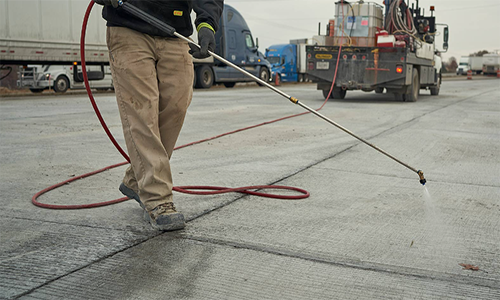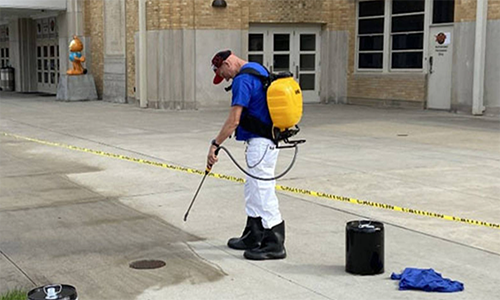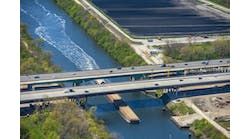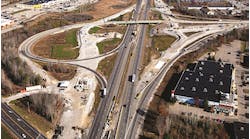By David Lieberman
There are more than 617,000 bridges across the United States, with about 46,000 of them having been declared in “poor” condition or structurally deficient by the Federal Highways Administration (FHWA). To reverse this trend, Congress and the Biden administration have set aside tens of billions of dollars in federal funding to repair, maintain, and support our aging bridge infrastructure.
There are two bridge programs, which are part of the bipartisanInfrastructure Investment & Jobs Act (IIJA). They include: the Bridge Formula Program (BFP) and the Bridge Investment Program (BIP). Although the programs have similar goals, they are different, and their differences are significant if states and localities — not to mention their private sector partners — are to take full advantage of this federal funding.
First, it is important to understand the differences. The BFP is a formula-based federal program, while the BIP is a competitive-based — sometimes referred to as “discretionary” — federal program.
Understanding the differences between formula grants and competitive grants is also important. A formula grant is exactly what it sounds like; the program’s funding is given out to states via formula or mathematical calculation. In this case, FHWA distributes funding to each state based on the costs of replacing all highway bridges classified in “poor” condition and the costs of rehabilitating all highway bridges classified in “fair” condition. States then get their allotted amount each fiscal year. Competitive grants, on the other hand, require an application process whereby a federal agency will score each submission against all the others. The applications that score the highest will receive funding. As BIP is a competitive grant program, FHWA is currently seeking applications through a Notice of Funding Opportunity (NOFO).1
The minimum that each state can receive in BFP funding is USD 45 million each fiscal year (through fiscal year 2026), and the funds are to be used for highway bridge replacement, rehabilitation, preservation, protection, or construction projects on public roads. Once a state receives its funding, it can use it for any of those reasons. However, FHWA states in one of its guidance documents that “the construction of a new highway bridge on a new alignment is an eligible project under the BFP, but FHWA encourages States to first focus their BFP funding on projects that improve the condition of in-service highway bridges classified in poor condition and that preserve or improve the condition of in-service highway bridges classified in fair condition.”
Furthermore, the FHWA encourages using BFP funds for projects that address equity or restore community connectivity. There is an 80/20 federal funding matching requirement that states must include, as the states must match $1 for every federal government’s $4. However, states can use federal funds to cover 100% of the cost of repairing or rehabilitating locally owned off-system bridges.
For the BIP, FHWA seeks applications for three categories: planning grants, bridge projects, and large bridge projects. Applicants may apply to one, two, or all three of these BIP funding categories. Templates are provided to applicants for each program and can be found in the NOFO.
The BIP allots $20 million each fiscal year for planning grants that will fund the planning, feasibility analysis, and revenue forecasting projects, which will then be eligible to apply for bridge project or large bridge projects.
Bridge projects are ones with eligible costs less than $100 million while large bridge projects are ones with eligible costs greater than $100 million. For bridge projects, a BIP grant must also be enough to fully fund the project, no less than $2.5 million, and with a maximum award amount of no more than 80% of the total eligible project costs. For large bridge projects, a grant must be enough to fully fund the project, no less than $50 million, and with a maximum award amount of no more than 50% of the total eligible project costs.
Qualified applicants should be aware that the BIP has a statutory requirement only for bridge project and large bridge project grants. The requirement is that the projects be reasonably expected to begin construction no later than 18 months after the date on which BIP funds are obligated for the project, as well as that preliminary engineering is complete for the project by that time.2
Because the BIP is a competitive grant program, there are application deadlines for all three funding streams:
Planning grants – July 25
Large bridge projects – August 9
Bridge projects – September 8
While some of the deadlines have passed, it is nonetheless vital to understand how the grant process works, as some projects may fit other grant categories, or interested applicants that missed the deadlines may apply during next year’s grant cycle. Given the relatively short window for the remaining grants, eligible applicants are encouraged to begin their submissions as soon as possible.
As you can see, while the BFP and BIP programs aim to achieve similar goals, they are quite different. Navigating the BIP and BFP program requirements and guidance is paramount to making the most of these two large funding streams from the Biden administration. R&B
David Lieberman is the Director of U.S. Government Relations for Bentley Systems












